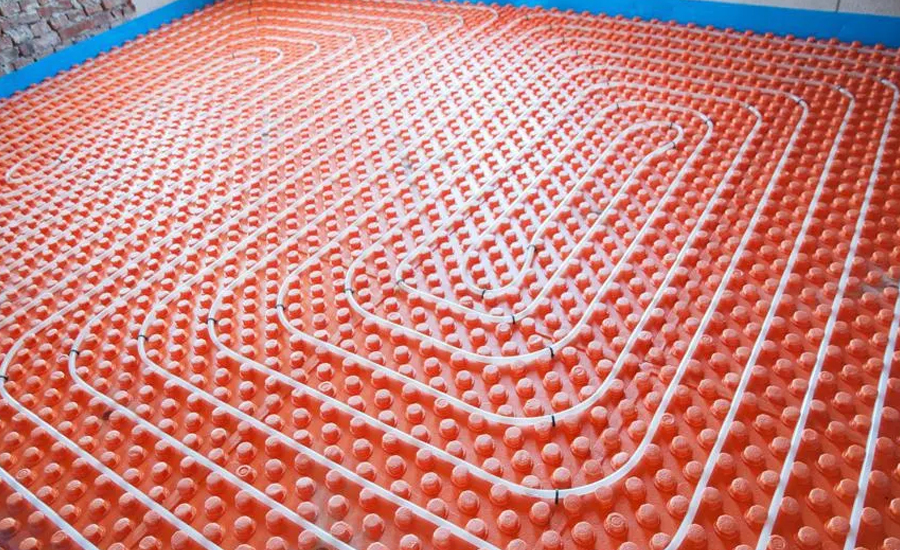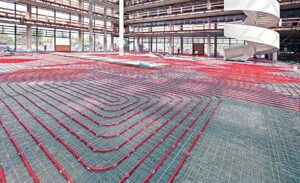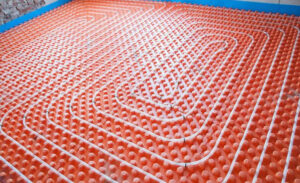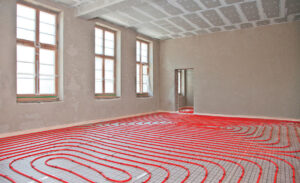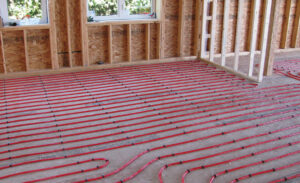Radiant flooring is a popular choice for homeowners seeking efficient and comfortable heating solutions. With various types of radiant flooring available, each offering unique benefits and considerations, it’s essential to explore your options to determine which one best suits your home’s needs and preferences. In this blog, we’ll delve into the different types of radiant flooring systems, highlighting their features, advantages, and considerations to help you make an informed decision.
Radiant Hydronic Flooring
Radiant hydronic flooring utilizes a network of water-filled tubes installed beneath the floor surface to distribute heat evenly throughout the space. This type of system is typically connected to a boiler or water heater, which heats the water before circulating it through the tubing. Radiant hydronic flooring is known for its energy efficiency, as water is an excellent conductor of heat, providing consistent warmth without significant energy loss. Additionally, hydronic systems can be installed under various flooring materials, including tile, hardwood, and carpet.
Electric Radiant Flooring
Electric radiant flooring systems consist of electric heating cables or mats installed beneath the floor surface to generate heat. These systems are powered by electricity and controlled by thermostats, allowing homeowners to adjust the temperature as needed for optimal comfort. Electric radiant flooring is relatively easy to install and well-suited for small or retrofit projects where access to a boiler or water heater may be limited. However, electric systems may have higher operating costs compared to hydronic systems, depending on local electricity rates.
Radiant Air Flooring
Radiant air flooring, also known as air-heated radiant flooring, utilizes a network of air ducts installed beneath the floor surface to distribute heated or cooled air throughout the space. This type of system works similarly to forced-air heating and cooling systems but operates at lower temperatures, providing more comfortable and energy-efficient heating. Radiant air flooring is compatible with various flooring materials and can be integrated into new construction or existing homes with minimal disruption.
Considerations for Choosing the Right Option
When selecting the right type of radiant flooring for your home, several factors should be taken into account:
- Budget: Consider your budget for installation and ongoing operating costs, as well as any potential incentives or rebates available for energy-efficient upgrades.
- Flooring Material: Different types of radiant flooring may be more compatible with certain flooring materials. Consider the type of flooring you prefer and ensure it is suitable for use with the chosen radiant system.
- Energy Efficiency: Evaluate the energy efficiency of each radiant flooring option and consider how it aligns with your sustainability goals and long-term cost savings.
- Installation Requirements: Assess the installation requirements and compatibility with your home’s existing infrastructure, including access to utilities and space limitations.
- Maintenance: Consider the maintenance requirements of each radiant flooring system and determine if you have the resources and expertise to maintain it properly.
Conclusion
In conclusion, exploring the different types of radiant flooring systems can help you determine which option is right for your home. Whether you opt for radiant hydronic, electric, or air flooring, each type offers unique benefits and considerations to consider. By evaluating your budget, flooring preferences, energy efficiency goals, and installation requirements, you can choose the radiant flooring system that best meets your needs and enhances the comfort and efficiency of your home.

